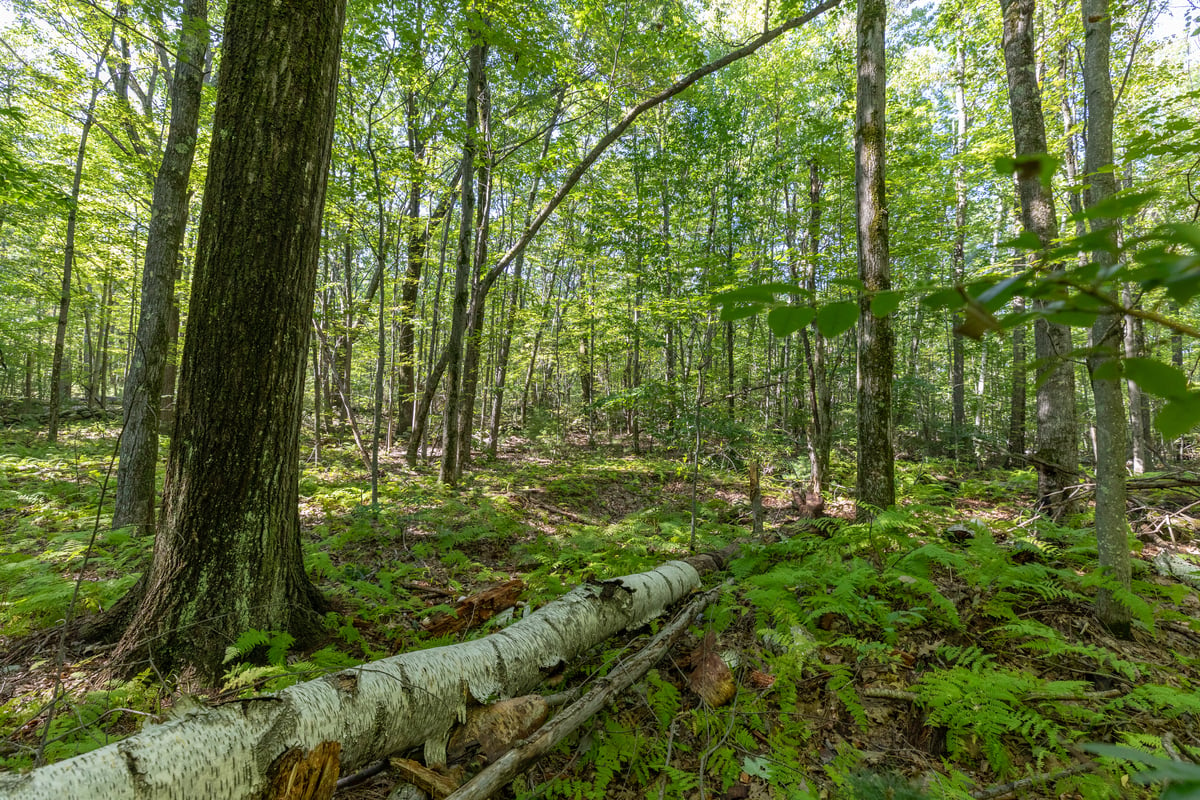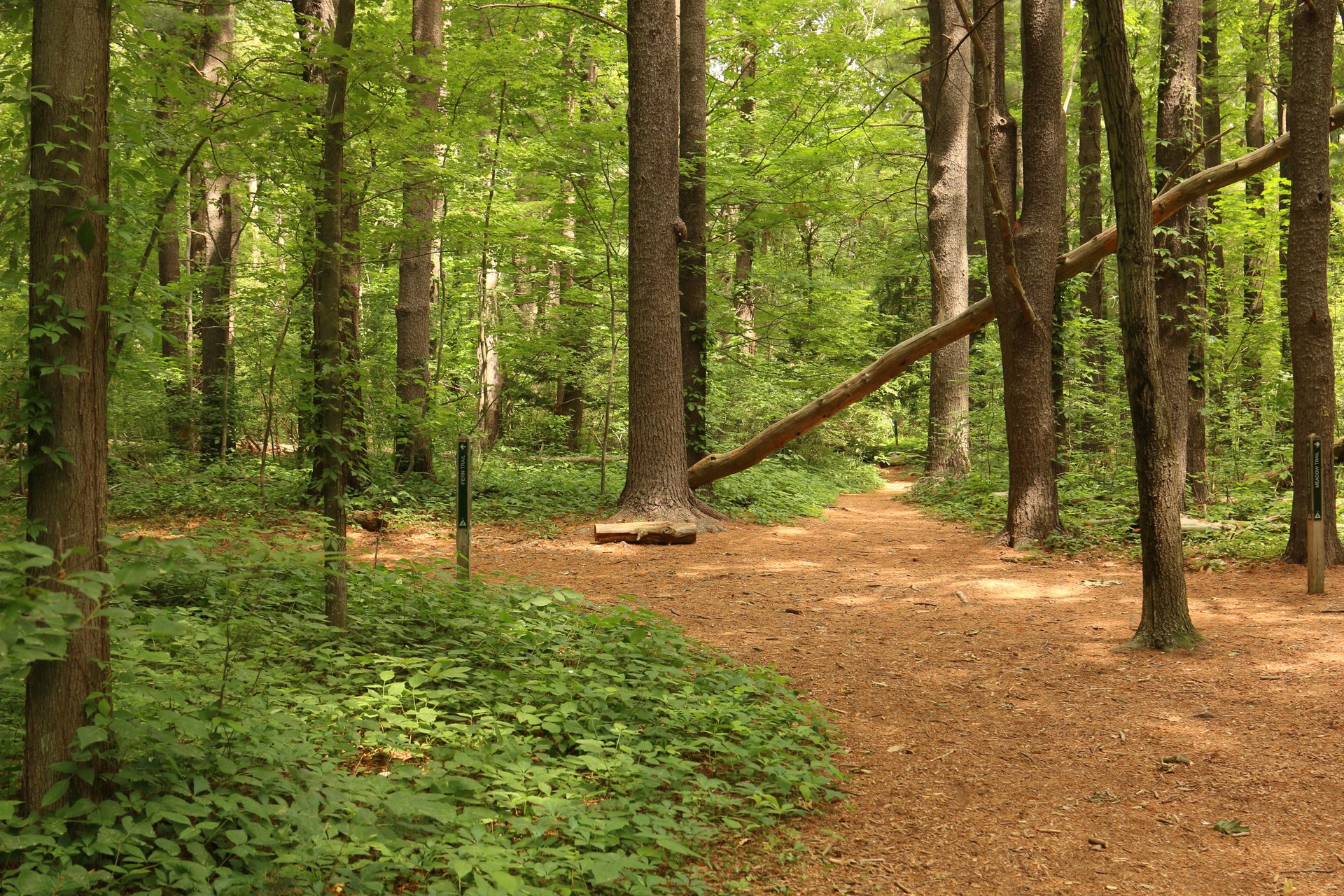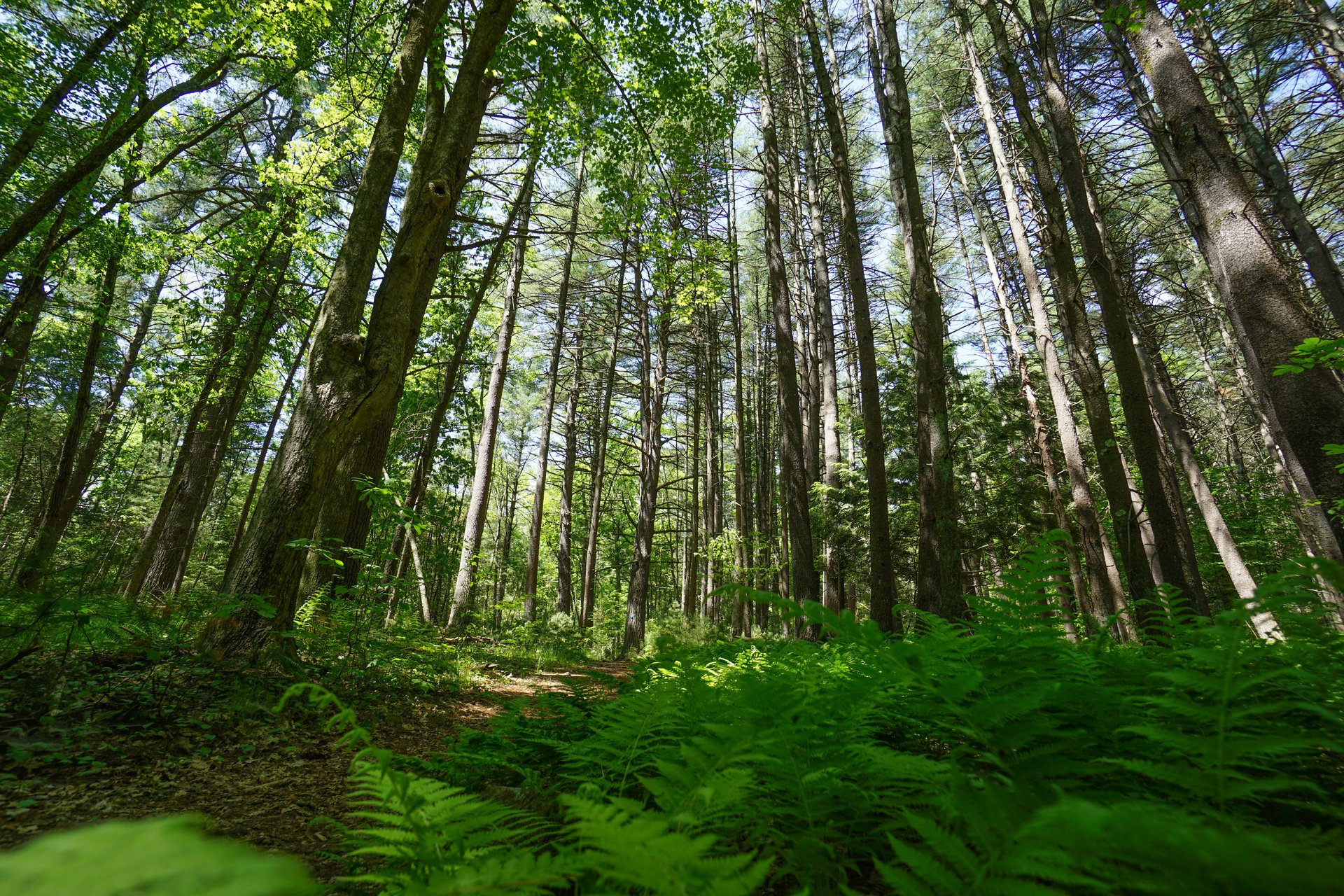Northern hardwood and oak forests are defining features of the New England landscape. About 60 percent of land in Massachusetts is classified as forest, along with 77 percent in Vermont, 82 percent in New Hampshire, and a staggering 89 percent in Maine. These woodlands offer unmistakable benefits to people, such as food, fiber, recreation, and carbon storage. Wildlife also depend on healthy forests for breeding sites, shelter, and food.
Mass Audubon uses carefully designed, evidence-based management practices to care for 25,000 acres of forests across the state.
Why are Forests Important?
For centuries, people have sought rejuvenation, adventure, and relaxation in forests. Even just a simple walk through the woods can decompress the stresses of our daily lives and reconnect us with the natural world. Woodlands also create practical health benefits for our communities, such as reducing respiratory illness, filtering water, and controlling erosion.
Wildlife need healthy, continuous forests, too. Continuous habitat linkages allow animals to safely shift their ranges in response to a changing climate.
Threats to Our Forests
Forests face many threats, including invasive plants, insect pests, and disease. But the two biggest threats to our woodlands are human development and climate change.
Roughly 5,000 acres of forest in Massachusetts are lost annually due to development. New development can be problematic because it removes decades of growth and increases forest fragmentation (discontinuous forest coverage).
Changing temperatures and precipitation patterns amplify the stresses caused by devastating storms, droughts, and invasive species. However, through carefully designed forest management practices, we can increase the resilience of our forests while optimizing both carbon storage and habitat quality for wildlife.
Types of Forest Management
There are two main approaches to forest management: passive and active. A passive approach allows forests to continue to mature with little intervention, while an active approach applies management practices to achieve specific goals, such as increasing forest resilience.
There is no one-size-fits-all approach to managing forests for resilience. One side of a forest may require passive management, while the other side requires more active management. An active approach could be the best option to achieve management goals, depending on factors like the age of the forest (young, middle-aged, or mature); the history of human activity; the presence of invasive species; and the overall biodiversity.
Active forest management can diversify the mix of tree species, support regeneration of young trees, introduce patches of young forest, mimic unique features of old-growth forests, and support wildlife species of conservation concern.
Forest Management in Action
Mass Audubon’s team of forest experts have been working on several projects to make our forests as resilient as possible by using both passive and active forest management strategies.
Restoring Rare Habitats
At Arcadia Wildlife Sanctuary in Easthampton and Northampton, we're reestablishing a floodplain forest in an area previously cleared for agriculture. Floodplain forests help control erosion and slow down floodwaters, which are becoming more extreme due to climate change. As part of this process, we are planting tree species that will thrive both in current and in future climate conditions as other tree species lose ground due to climate change.
Managing Working Landscapes
At Elm Hill Wildlife Sanctuary in Brookfield and North Brookfield, we're fulfilling the "working landscape" terms of an Agricultural Preservation Restriction (APR), which requires the sanctuary to generate agricultural products. Our harvesting of trees not only generates local wood products, but also creates habitat for birds like American Woodcock, Eastern Towhee and Chestnut-sided Warbler, which need patches of young, regenerating forest.
Rewilding by Removing Structures
Over the next two years, several buildings will be removed from the fields of Cold Brook Wildlife Sanctuary in Sandisfield and Otis, and we will reestablish forest on more than 20 acres. These areas—formerly covered by buildings, lawns, and mown fields—will rewild as the fields transition to young forest, promoting a habitat type that is currently in short supply. The young forest will eventually develop into mature forest, reconnecting thousands of acres of surrounding forested land.
In addition to taking down buildings, dam removal is a powerful way to rewild rivers and surrounding forests back to a more natural state. In recent years, we have taken down dams at several sanctuaries to restore function to rivers and streams and enable surrounding habitats and wildlife to thrive. Our Ecological Restoration Program is currently developing an approach to dramatically increase the pace of dam removals from the streams of forested headwaters.
Creating a Mosaic
Many forests in Massachusetts are structured similarly due to previous boom-bust cycles of land clearing and abandonment. Suppression of natural disturbances, such as wildfires, beaver activity, and flooding has also homogenized forests. We can increase forest diversity and support less-common forest types by mimicking natural disturbances through forestry.
At Flat Rock Wildlife Sanctuary in Fitchburg, we thinned sections of forest to recreate oak woodland conditions, increasing the amount of sunlight reaching the ground and supporting habitat for young forest specialists, such as the Eastern Towhee. A diverse mosaic of forest ages across the landscape supports greater biodiversity and enhances the long-term resilience.
Partnering with Others to Create Resilient Forests
To bring our work and expertise to forests beyond our wildlife sanctuaries, we collaborate with the Massachusetts Department of Conservation & Recreation (DCR), the New England Forestry Foundation, the Woodland Partnership of Northwest Massachusetts, the Northern Institute of Applied Climate Science, The Nature Conservancy, and the
Massachusetts Woodlands Institute to create resources and broaden understanding and implementation of forestry with wildlife and the climate in mind.
Foresters can become certified in creating and implementing climate-smart forestry plans for their clients. Private landowners interested in conserving their woodlands can work with these trained foresters to support their woods with a special focus on climate change.
How you can Support Resilient Forests
Whether you live on a forested piece of land, love native wildlife, or just enjoy a walk through the woods, you can help Mass Audubon support our forests. Donate today by going to massaudubon.org/donate or learn more about climate-smart forestry by visiting massaudubon.org/forest.





